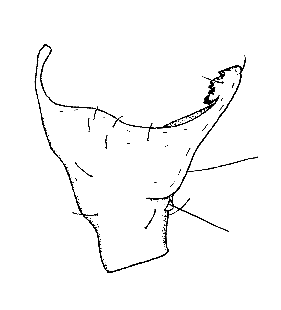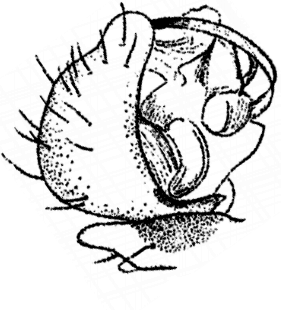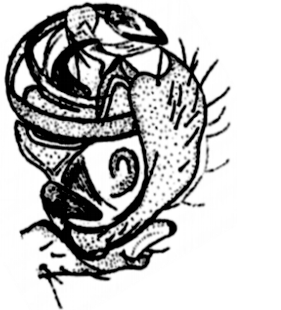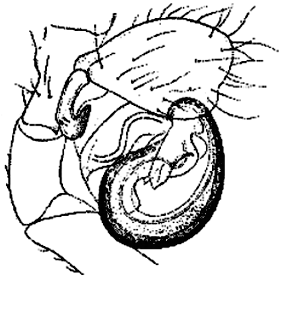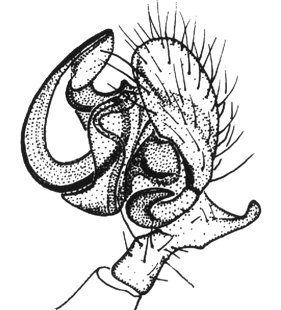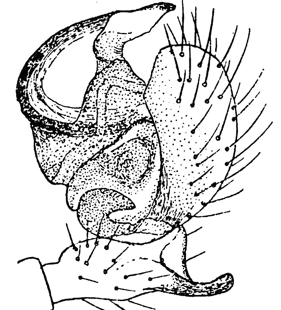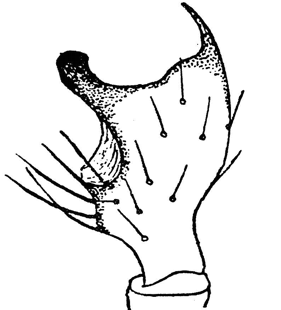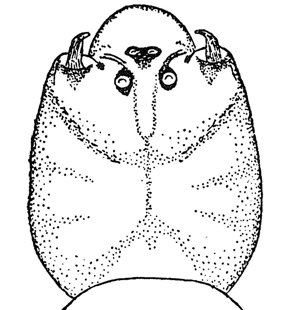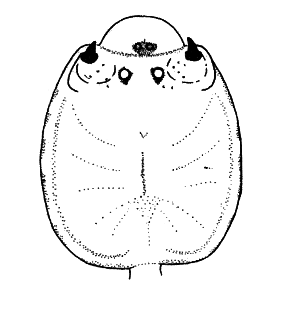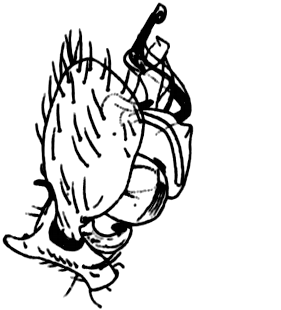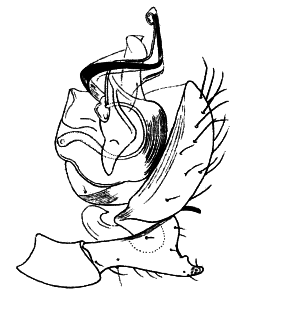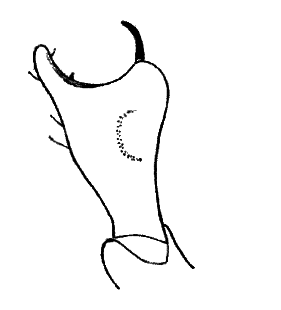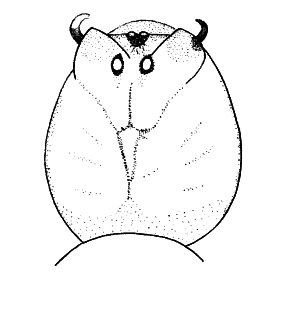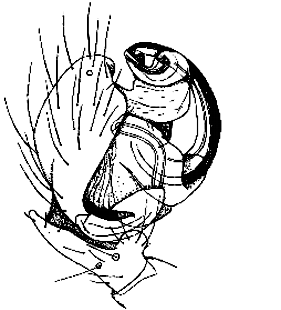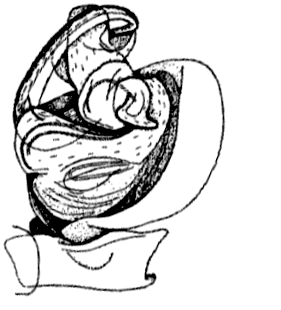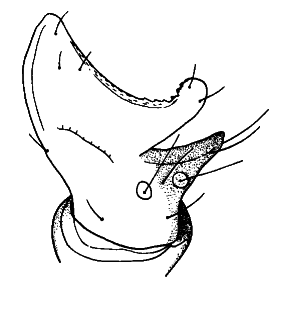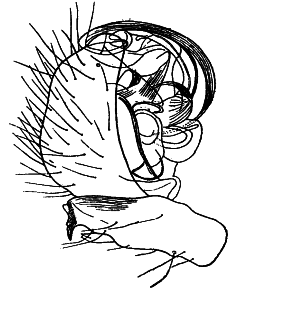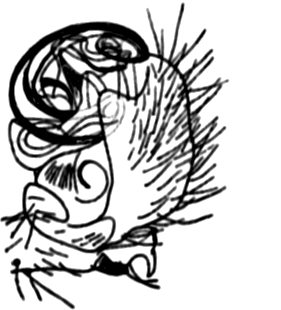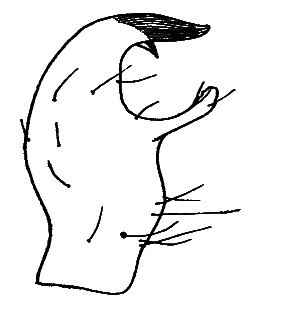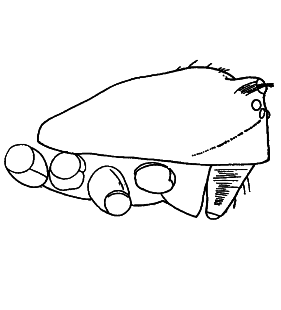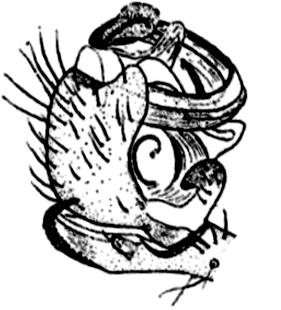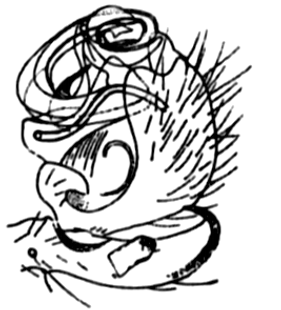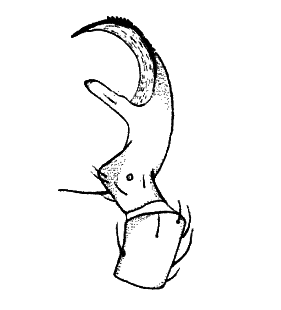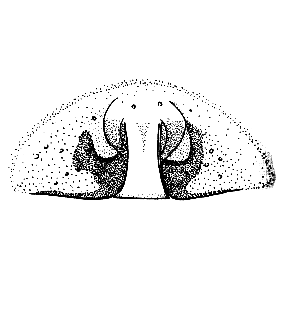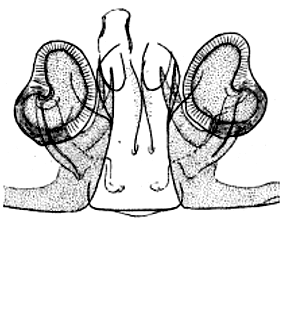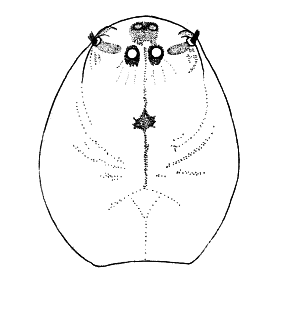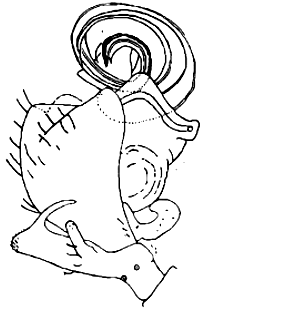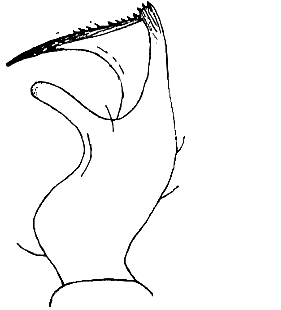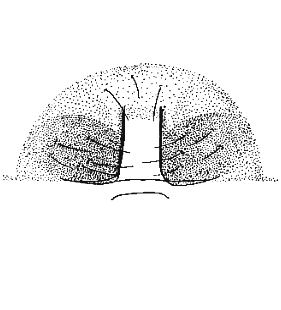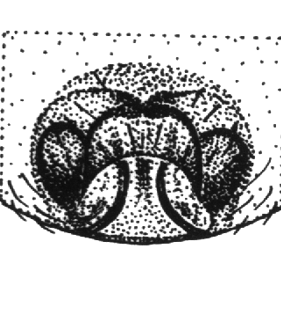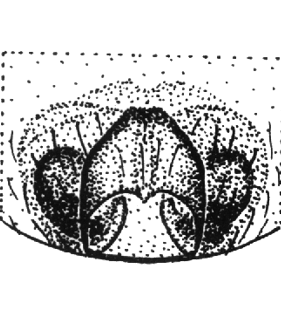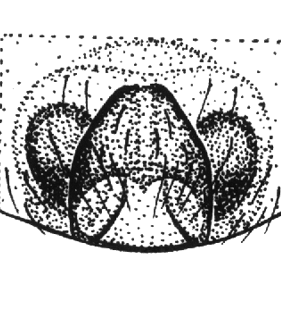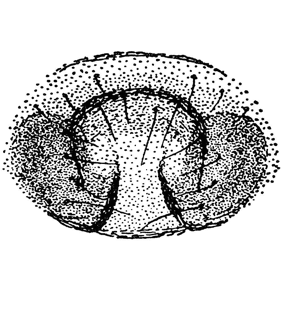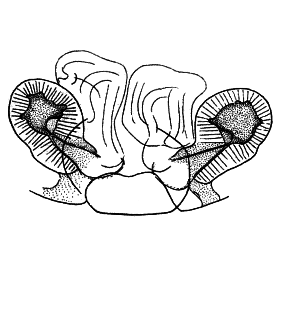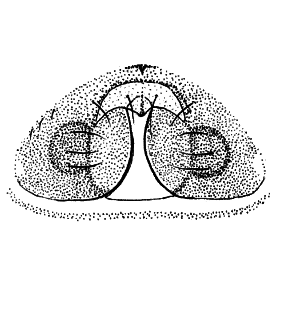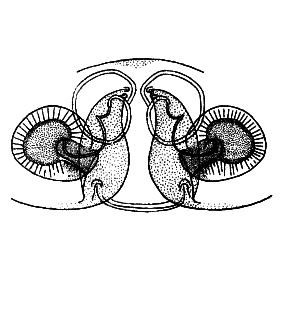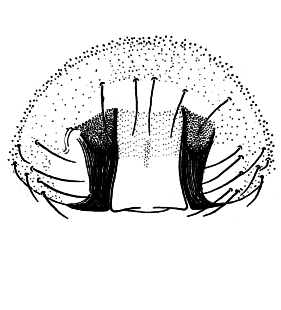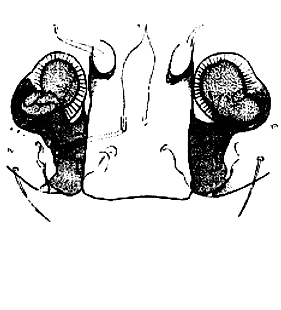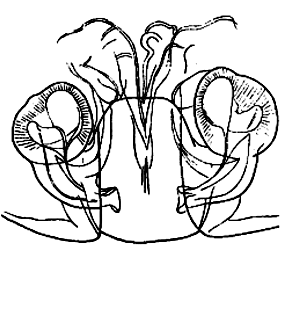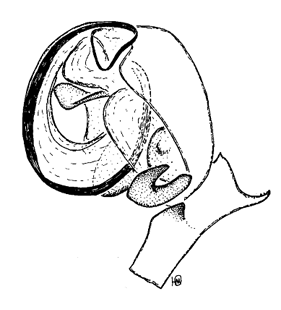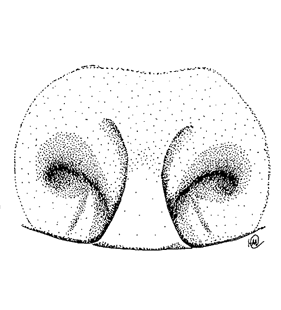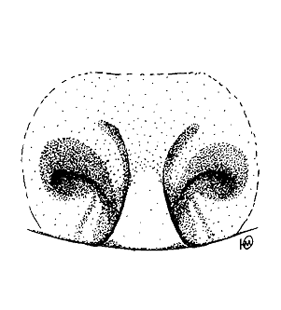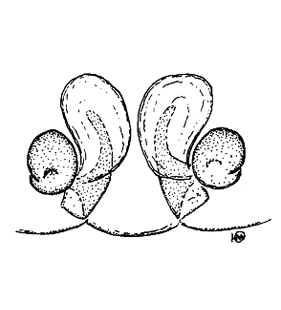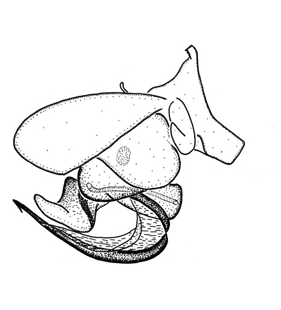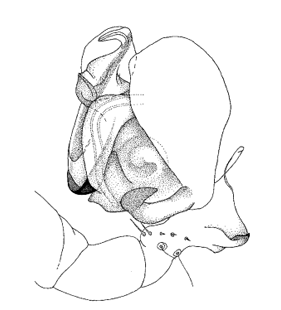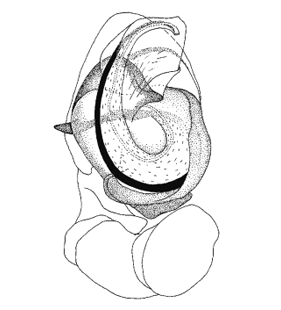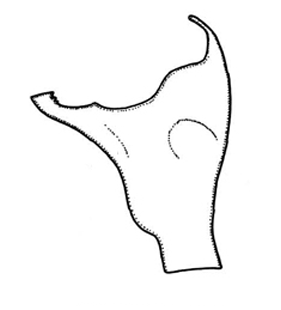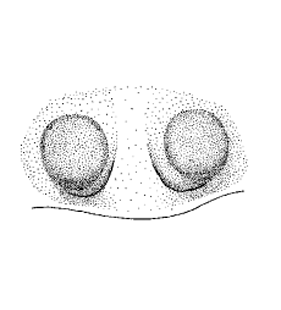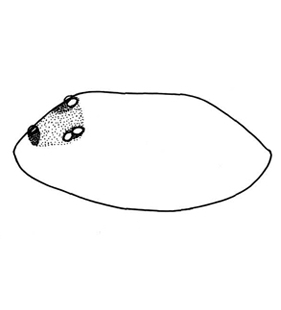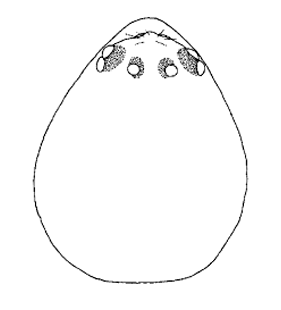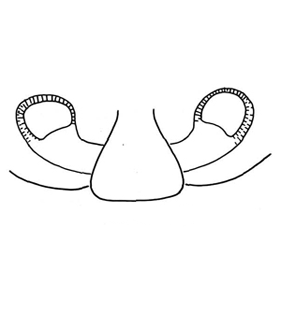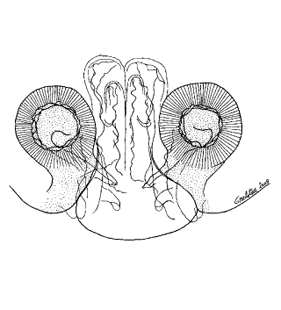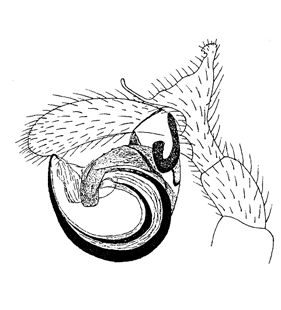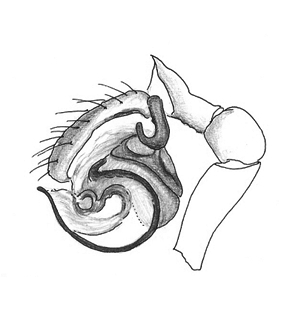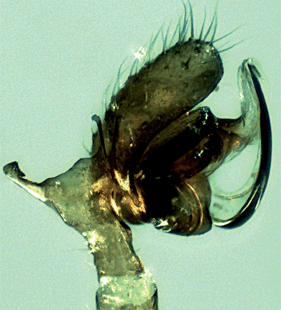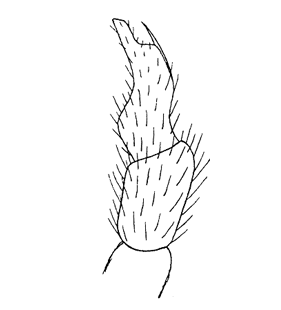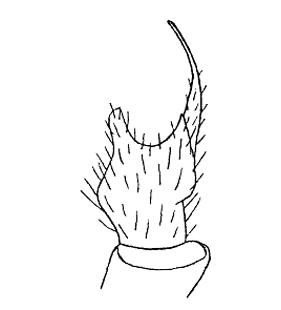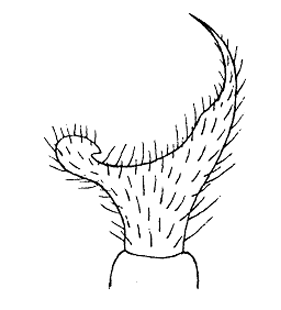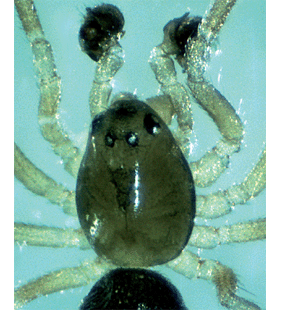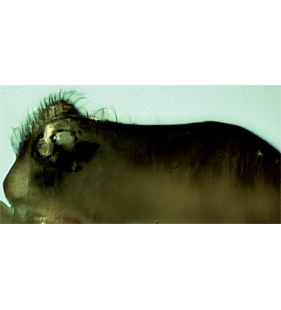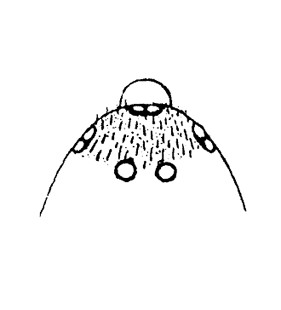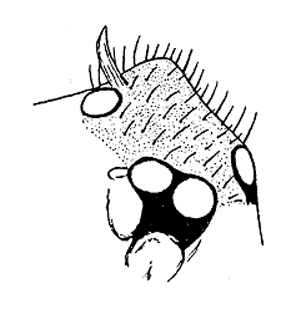Linyphiidae: Panamomops Simon, 1884
|
In case you find an error or have a specific suggestion, please follow this link: click
|
|||||||||||
| 1 |
Males | ||||||||||
| - | Females | ||||||||||
| 2 (1) |
Prosoma with tufts of bristles or small horns on protruding corner | ||||||||||
| - | Prosoma without tufts of bristles; embolus curved; prosoma as fig. Panamomops inconspicuus (Miller & Valešová, 1964) |
| |||||||||
| 3 (2) |
Prosomal corners with tufts of bristles overtopping clypeus in dorsal view; pedipalp as fig. Panamomops mengei Simon, 1926 |
| |||||||||
| - | Clypeus visible in dorsal view | ||||||||||
| 4 (3) |
Clypeus strongly protruding; pedipalp as fig. Panamomops sulcifrons (Wider, 1834) |
||||||||||
| - | Clypeus not strongly protruding | ||||||||||
| 5 (4) |
Tibial apophysis short and with a slender, bent process; pedipalp and prosoma as figs. Panamomops tauricornis (Simon, 1882) |
| |||||||||
| - | Tibial apophysis different | ||||||||||
| 6 (5) |
Tibial apophysis with 2 long processes | ||||||||||
| - | Tibial apophysis with 2 short processes; pedipalp as fig. Panamomops palmgreni Thaler, 1973 |
| |||||||||
| 7 (6) |
Anterior and posterior apophysis of tibia almost equal in length, anterior one pointed, the posterior one rounded; a backwardly bent claw originates at base of anterior apophysis; pedipalp and prosoma as figs. Panamomops latifrons Miller, 1959 |
| |||||||||
| - | Distal tibial apophysis with fine serrated outer edge |
||||||||||
| 8 (7) |
Long distal part of tibial apophysis bent, the outer margin finely serrated. Pedipalpus as in fig. Panamomops fagei Miller & Kratochvíl, 1939 |
| |||||||||
| - | Long distal part of tibial apophysis rectangularly bent, its outer margin with a protruding, serrated process; Pedipalp as in fig. Panamomops affinis Miller & Kratochvíl, 1939 |
| |||||||||
| 9 (1) |
Epigynal plate trapezoid, approximately as long as wide | ||||||||||
| - | Median part of epigyne longer than wide | ||||||||||
| 10 (9) |
Posterior margin of epigynal plate straight; vulva as fig. Panamomops sulcifrons (Wider, 1834) |
| |||||||||
| - | Posterior margin of epigynal plate bent | ||||||||||
| 11 (10) |
Epigyne/Vulva as figs. Panamomops inconspicuus (Miller & Valešová, 1964) |
||||||||||
| - | Epigyne/Vulva as figs. Panamomops palmgreni Thaler, 1973 |
| |||||||||
| 12 (9) |
Median epigynal part bordered by bent lateral margins; vulva as fig. Panamomops tauricornis (Simon, 1882) |
| |||||||||
| - | Lateral epigynal margins straight | ||||||||||
| 13 (12) |
Copulatory opening strongly sclerotised, clearly visible; vulva as fig. Panamomops mengei Simon, 1926 |
| |||||||||
| - | Copulatory openings less strongly sclerotised | ||||||||||
| 14 (13) |
Median epigynal part distinctly longer than wide | ||||||||||
| - | Median epigynal part only little longer than wide Panamomops latifrons Miller, 1959 |
| |||||||||
| 15 (14) |
Copulatory opening hidden under lateral epigynal plates; vulva as fig. Panamomops fagei Miller & Kratochvíl, 1939 |
| |||||||||
| - | Epigyne and vulva as figs. Panamomops affinis Miller & Kratochvíl, 1939 |
|
Further taxa
1. Panamomops dybowskii (O. Pickard-Cambridge, 1873) | ||
2. Panamomops fedotovi (Charitonov, 1937) | ||
3. Panamomops mutilus (Denis, 1962) |

